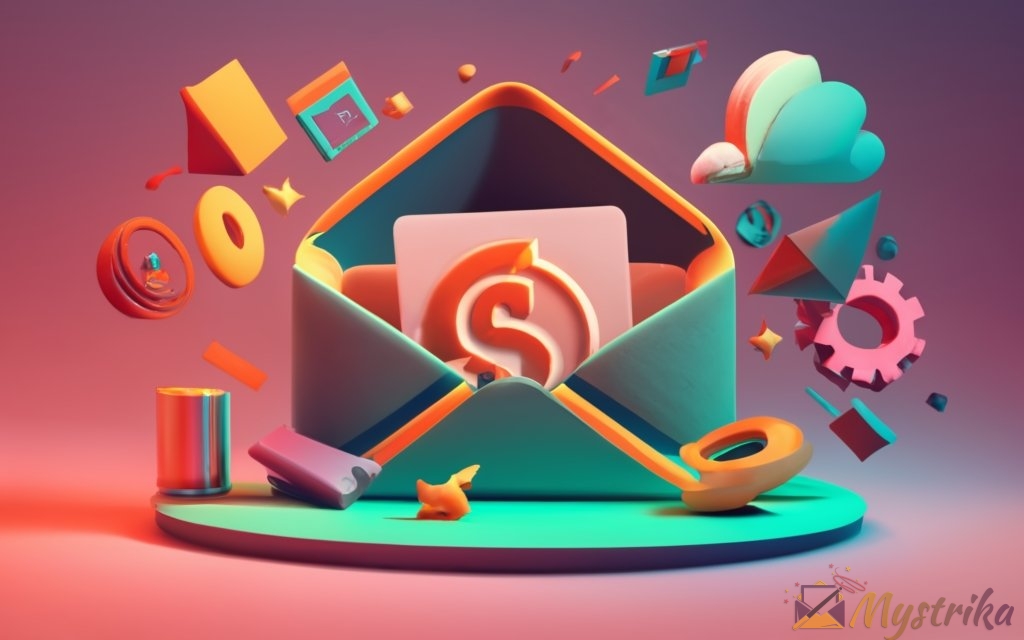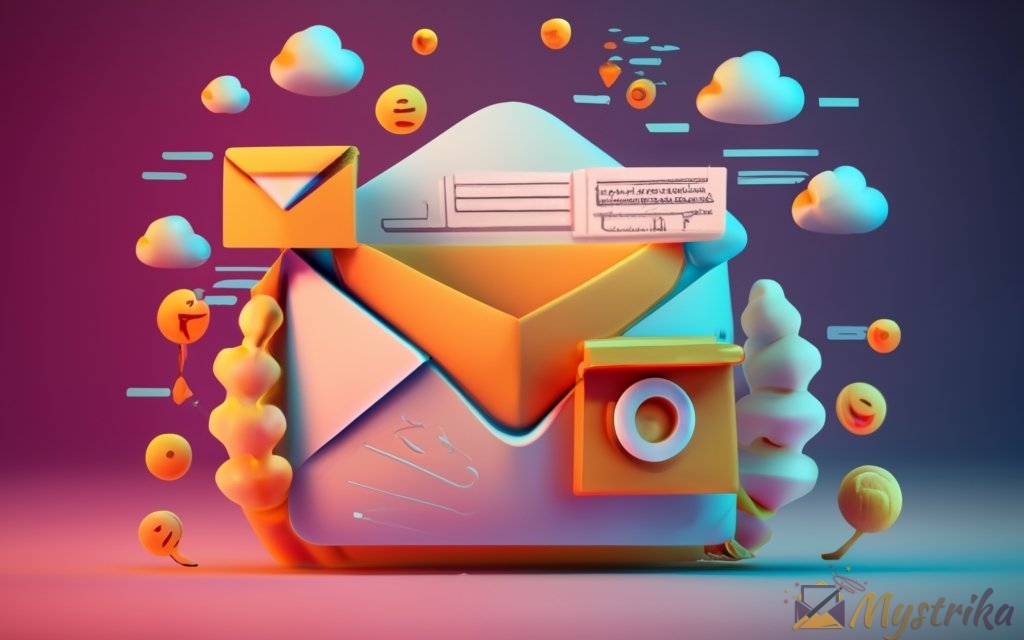Finding the right time to send that perfect cold email is like trying to nail jelly to a tree. But what if you could turn email timing from a frustrating guessing game into a data-backed science?
In this comprehensive guide, we dive into analyzing millions of emails to uncover the proven best days and times for outreach. You’ll discover research-backed insights, real-world best practices, and tips to transform your approach.
Stop leaving email success up to chance. Apply the data-driven blueprint to finally master scheduling for higher open rates, engagement, and responses.
Why Timing Matters for Email Outreach
When it comes to your cold email outreach campaigns, you likely spend significant time personalizing messages, researching prospects, and crafting compelling content. But all that effort goes to waste if your email ends up in the wrong inbox at the wrong time.
Timing is just as crucial as content when it comes to email success. Understanding optimal timing can mean the difference between an email that gets opened, read, and generates a positive response vs one that gets overlooked or ignored.
Let’s explore the three key reasons why timing is so important for effective email outreach:
Catching People When They’re Engaged With Their Inbox
Imagine you spent hours preparing a delicious three-course meal. You set the table beautifully, light some candles, put on some soft music. But then your partner comes home exhausted after a brutally long day, wanting nothing more than to collapse on the couch. Your thoughtful meal risks going uneaten.
The same idea applies to email timing. You can craft the most compelling message possible, but if you fail to deliver it when your prospect is engaged with their inbox, your email risks being overlooked.
People tend to check email in bursts at certain times of day. Ever notice how your inbox seems slow at 8pm but then suddenly you have a flood of new messages at 9am?
Most professionals have key windows where they’re actively reading, prioritizing, and responding to messages. If your email lands outside those prime engagement hours, it’ll likely get buried. But if you hit the sweet spot when their inbox is front-of-mind, your message has a much better chance of being opened quickly.
Think about the ideal timing to have a meaningful conversation with your partner. The same approach applies to connecting with your prospects. As legendary sales expert Jeb Blount puts it:
“Email timing is really about understanding your prospect’s mindset. Just as you wouldn’t call your boss at dinner or your partner when they’re exhausted after work, you have to align your outreach with your prospect’s mindset.”
Aligning With Your Recipients’ Mindsets and Availability
Beyond simply catching your prospect during active inbox times, you also want your message to align with their mindset and receptivity.
We all go through different modes throughout the day – times we’re focused on specific tasks where we don’t want distractions versus times we’re open to new ideas and communication.
You can sometimes intuit prospects’ mental patterns based on their industry and role. For example, executives may be more receptive early morning before their calendars fill up, while teachers might be more approachable after school hours. Engineers may engage better mid-morning before deep diving into projects.
Understanding your recipients’ work patterns, focus hours, and moods can help you pinpoint when their mindset is most open to receiving and thoughtfully considering your message.
Availability also matters. Hitting someone’s inbox right as they’re stepping into an important meeting or when they’re trying to finish a report risks poor timing. But catching them on a commute, during a coffee break, or winding down from a meeting could get better results.
The sweet spot is the intersection of mindset and availability – when your recipient is both receptive and has the time to fully engage.
Avoiding Overlooked Messages
We’ve all felt that frustration when you spend time crafting an email, click send, and…nothing. No reply. Maybe not even an open.
Oftentimes, a lack of response isn’t about your message but rather reflects bad timing. If you hit send right as they step into a long meeting or as thousands of other emails flood their inbox, your message risks getting buried and overlooked.
During work hours, professionals can receive anywhere from 50 to 100+ emails per day. If you fail to time your outreach when their volume is lower, your email will likely disappear into the abyss.
Even highly relevant messages often go ignored simply because they were sent at the wrong time and drowned by other incoming communication.
Strategic timing takes into account your prospect’s email habits and patterns. You want to avoid having your message fly under the radar and increase the chances of it standing out.
The smart email sender thinks carefully about timing not just to save themselves effort but, more importantly, to ensure their carefully crafted message gets the attention and engagement it deserves.
For example, Friday afternoons tend to be bad timing as inboxes fill up with weekend plans. Late at night is also risky as messages can get stuck below the next day’s influx. But early morning or mid-afternoon windows often work better when message volume is lower.
In summary:
- Time your emails around periods of peak engagement to increase opens
- Understand your recipients’ mindset and availability for optimal receptivity
- Avoid getting buried by bad timing leading to overlooked messages
Strategic timing is crucial for email success, making the difference between messages that get responses versus ones that are ignored. Take the time to determine optimal timing and you’ll see your outreach efforts pay off.

Key Factors That Influence Ideal Email Timing
You now know that timing is critical for email success. But how do you determine the “right” time to hit send?
While no single time will work perfectly for every prospect, there are three core factors you should consider:
Recipient’s Time Zone
This one may seem obvious, but it’s easy to overlook if you’re not carefully tracking where your prospects are located.
You always want to consider your recipient’s time zone when scheduling emails. Sending a pitch email at 3 AM their local time because it’s a reasonable 10 AM for you is a recipe for disaster. They’ll most likely be fast asleep!
Instead, you need to align your outreach with business hours and periods of peak engagement in their geography.
For example, if you’re prospecting companies on the West Coast and you’re on the East Coast, don’t just blast emails first thing in the morning your time. That may be 5 AM local time for prospects who aren’t checking inboxes yet.
A better approach is to segment your list by time zone region. Then schedule your email blasts to go out at roughly 10 AM in your prospects’ local zone. Time zone personalization will significantly boost your open and response rates.
Recipient’s Industry Norms
Beyond geography, different industries also have unique communication rhythms. What’s considered a prime time for one industry may be completely off base for another.
For example, email engagement for the finance industry may surge on Monday mornings as people tackle the new week. However, weekends could be best for the retail industry as people browse online.
Understanding your recipients’ industry norms through research and testing can reveal optimal industry-specific windows you can align with.
Take real estate for example. Weekday mornings may be best for connecting with busy realtors before meetings and open houses pile up. Scheduling an email blast Friday evening risks low visibility as agents prep for weekend showings.
Tailoring your outreach timing to industry-relevant patterns and workflows shows your understanding of your prospects’ world and makes your emails more resonant.
Recipient’s Job Role and Schedule
Within the same company, people in different roles will have unique schedules and email habits. Even if you nail the right time zone and industry, job role matters too.
Executives and managers may engage with email early morning before the chaos begins. Engineers and analysts dive into focus work mid-morning once strategic priorities are set. Customer service reps handle customer tickets in the afternoons.
Understanding your prospect’s day-to-day responsibilities can reveal windows where they’re more likely to be scanning inboxes and receptive to outreach.
You can gather intel through LinkedIn profiles, company websites, people directories, and simple Google searches. This will provide clues into what time slots could work best for connecting with each recipient.
For example, mornings before teaching may be ideal for school principals whereas lunch breaks work better for teachers. Hospital directors may read emails at night while doctors and nurses need daytime outreach.
Optimizing your timing based on job role leads to emails that land at each recipient’s prime engagement hours.
In summary, three core factors shape your ideal email timing:
- Time zone – Consider geography and align with local business hours
- Industry – Research norms and workflows to find ideal windows
- Job role – Identify patterns based on daily responsibilities and schedules
While determining optimal timing requires some legwork, it pays off by driving more opens, clicks, and responses. Don’t take a one-size-fits-all approach – personalize your timing using these three factors.

Research-Backed Best Days for Email Outreach
When launching an email campaign, the day you send it can be just as important as the time. While results vary across industries, extensive research reveals that certain days consistently outperform others.
Let’s explore what 10 major studies uncover about the highest and lowest performing days for email outreach.
Weekday Options (Tuesday, Wednesday, Thursday)
Across the board, Tuesdays, Wednesdays, and Thursdays emerge as the top-performing days for email sends.
Several studies found Thursday is the #1 best day, taking first place in 4 of the 10 studies analyzed and second place in one more.
If sending only one email blast per week, Thursday would be your best bet.
Tuesday also shines, ranking first place in 3 studies and second place in 4 studies. For a two-email per week cadence, Tuesday and Thursday are your two prime options.
Wednesday secures the third place position, taking first place in one study and second place in three more. While not quite as strong as Tuesday or Thursday, Wednesday still beats out other weekdays.
Collectively, Tuesday, Wednesday and Thursday took first place in 8 of the 10 studies reviewed. The researchers attributed this to:
- Higher open rates as people settle into the workweek
- More time to process non-urgent emails
- Avoiding Monday scramble and Friday wind-down
In summary, focusing your email blasts on these three weekdays will deliver optimal visibility and engagement.
Weekend Considerations (Lower Engagement)
The data clearly shows that weekends underperform for email outreach.
Saturday fared reasonably well in a few studies with higher open rates since fewer emails are sent over the weekends. However, Sunday consistently ranks last across every study reviewed.
Some factors contributing to lower weekend engagement:
- More disrupted work schedules
- Priority on personal time over work
- Limited time spent reading emails
- Smaller overall volume of email sent
This doesn’t mean you should completely avoid weekends – just be strategic. For example, you may experiment with 1 PM Saturday sends when your data shows recipients tend to be more active. But limit weekend emails to nurture campaigns versus initial outreach blasts.
Avoiding Mondays (Hectic Workday) and Fridays (Weekend Mindset)
Mondays are often frenzied catch-up days as people dive into overflowing inboxes after the weekend. Your campaign risks getting buried amidst the high volume of Monday emails.
However, late Monday afternoons can work well for follow-up messages after initial outreach has been sent earlier in the week.
Fridays tend to underperform as people shift into weekend relaxation mode. Your recipients may be more focused on personal plans than engaging with your message.
Again, Fridays still offer potential for follow-up emails to reinforce earlier outreach. Just avoid major new prospecting campaigns.
In summary, Tuesdays, Wednesdays and Thursdays consistently prove to be the prime days for email sends based on hard data. Avoid Mondays and Fridays for major prospect outreach, and use weekends sparingly.
Align your email calendar with these insights, while still testing across days on a limited scale. The power of your campaign relies heavily on picking the best days.

Data-Driven Best Times of Day to Send Emails
Now that you know the optimal days, let’s drill down into the best times of day to hit send on your email campaigns.
Extensive data reveals key windows that tend to drive higher open and response rates.
Mornings For Starting The Workday (8-10 AM)
Mornings consistently rate as prime email timing across research studies.
The 8-10 AM window proves optimal as people begin their workdays and catch up on overnight messages. Your email lands in that critical time when inboxes are getting attention.
In particular, 10 AM emerges as the single best hour for opens, taking first place in 4 of 10 studies analyzed.
9 AM also shines bright, ranking as a top performer in 6 of the 10 data sets.
And 8 AM secures third place among top morning send times.
What makes the 8-10 AM zone so effective?
- Email is a key morning task for most professionals
- Inboxes have fewer competing new messages early in the day
- Attention and mental energy are highest early on
- Prime hours before meetings and deep work begin
Sending strategic emails as your recipients start their days will dramatically boost visibility.
Mid-Day For Lunch Breaks (Noon-2 PM)
Around lunchtime, engagement rates also tend to surge.
1 PM emerged as a top five performer across the research, suggesting professionals take a quick email check during their lunch breaks.
The noon-2 PM zone is an ideal catch point as focus shifts away from intensive morning work.
Why try the midday window?
- People take a mental break and scan inboxes
- Lower email volume compared to packed mornings
- Quick check-ins between meetings and tasks
- Moment to process non-urgent messages
As your recipients recharge at mid-day, your message has room to stand out.
Late Afternoons For Winding Down (4-6 PM)
Later afternoon also holds opportunity as the workday winds down.
3 p.m. secured a top five spot in the compiled data, indicating professionals spend some of this transitional time catching up on emails.
Factors that make the 4-6 PM zone promising:
- Checking emails between tasks as energy winds down
- Transition from intensive work to personal life
- Catch-up window before next-day inbox rush hits
Slotting your email campaign into this change-of-pace window can help maximize visibility.
Evening & Overnight For Low Inbox Volume
While evenings tend to have lower open rates overall, late nights and early mornings hold an interesting advantage—fewer competing emails crowding the inbox!
If you can catch your prospect during their morning coffee at 6 AM or late-night scrolling at 9 PM, your message has a better chance of standing out.
However, engagement at these times can vary significantly based on work schedules. Evenings hold potential with the right prospects.
Some tips for optimizing off-peak timing:
- Test specific late-night and early AM times with your audience
- Focus on recipients who tend to engage outside working hours
- Limit evening/overnight emails to follow-ups or one-off sends
- Monitor open and response rates to identify ideal windows
Getting your emails in during off-peak hours can ensure visibility when inbox volume is low. But be selective in using this approach.
In summary, the key data-driven times highlight:
- 8-10 AM for morning productivity
- Noon-2 PM for mid-day recharging
- 4-6 PM as the workday winds down
- Fringe hours for low email volume
Keep these prime data-backed windows in mind as you optimize your email timing. Test across different times tailored to your recipients’ habits. With strategic scheduling, your outreach will hit inboxes at the moments it’s most likely to get attention.

Best Practices For Scheduling Emails
You now have a data-backed framework for the optimal days and times for email outreach. But how do you put this into practice effectively?
Follow these proven best practices to schedule your campaigns for maximum impact:
Personalize Based on Recipient’s Context
Resist the one-size-fits-all approach. While studies reveal overall trends, individual timing preferences vary. Personalize each recipient’s send time based on their unique context.
Tailor to time zones: 301 different time zones exist globally. Ensure your segmentation accounts for geography, aligning send times to local business hours.
Consider life patterns: Is someone an early riser or a night owl? Do they check email during breakfast or mid-commute? Look for clues in their LinkedIn profile or through basic research.
Note role differences: A teacher and a financial analyst will have distinct email engagement patterns based on work hours. Executive mindsets evolve as days progress.
Watch for events: If a major conference or holiday falls during your campaign window, account for disrupted schedules.
Test fringe hours: While late nights show lower overall engagement, you may discover pockets of opportunity with select recipients.
Get inside each contact’s head. Avoid assumptions. The right timing for an NYC-based executive will miss the mark for a Singapore-based engineer.
Experiment With Days and Times
The research provides starting points, but your data matters most. Run A/B testing campaigns to identify your audience’s ideal windows.
Send a test sequence: Orchestrate a sequence with email #1 on Monday at 8 AM, email #2 on Wednesday at 10 AM, and so on across different days and times.
Monitor engagement: Track open and click-through rates to see which installments perform best.
Review analytics: Dive into your email and site analytics to identify response patterns. When do you see email traffic surge?
Try fringe hours: Test earlier mornings or later evenings on a small scale to detect pockets of opportunity.
Iterate based on insights: Let your data guide you. If Mondays tank but Wednesdays soar, adjust your approach accordingly.
Adapt for seasons: Engagement may fluctuate in summer months when people vacation or around major holidays. Account for these seasonal shifts.
Don’t rely solely on broad research. Let your recipients’ behavior inform ideal timing through continual testing and optimization.
Use Time Zone Segmentation Features
Scheduling each email manually based on time zones is inefficient. Leverage email platform features to simplify personalization.
Upload contact time zones: Maintain a database with each recipient’s time zone for easy segmentation.
Set dynamic send times: Configure your system to align email delivery with business hours associated with each time zone.
Schedule within windows: Block time zones into AM/PM windows and schedule sends within each period.
Use timezone merge tags: Personalize body content based on the recipient’s time zone, like “Good morning” or “Good evening.”
Integrate calendars: Connect your email and calendar tools to seamlessly schedule sends during availabilities.
Try time-of-day APIs: Leverage APIs that recommend optimal timing through machine learning algorithms.
Take advantage of automation to scale time zone personalization across your recipient base. The technology does the heavy lifting for you.
Optimize for Mobile Email Checking
Don’t assume recipients will only engage from desktop. Over half of emails are now opened on mobile. Design your timing with mobility in mind.
Identify engagement spikes: See when opens spike on mobile vs desktop to identify patterns.
Test early morning: People often check email first thing in the morning on phones. Use this window wisely.
Consider commute times: Morning and evening commutes tend to show increased mobile engagement.
Watch for lunchtime: Data shows higher mobile opens near lunch as people take a quick break.
Shorten content: Ensure text is scannable and concise for smaller screens.
Enhance subject lines: Compelling mobile-optimized subject lines are key.
Simplify design: Remove unnecessary design elements that won’t translate well on mobile.
Test CTA placement: Place call-to-actions strategically for mobile users.
As more professionals work remotely, mobile email must be central to your timing optimization strategy.
Consider Industry Trends and Workflows
Recipient behavior also varies by industry. Align your timing with industry-specific norms.
Research business hours: Stay on top of popular hours in your industry. Is it standard 9-5 or more variable?
Note busy periods: Avoid sending during your industry’s known crunch times.
Watch global calendars: Account for industry events, conferences, or holidays that disrupt standard rhythms.
Go behind the scenes: Talk to employees in target companies to learn internal communication cadences.
Review media: Look to industry media and thought leaders for insights into audience habits.
Factor in job roles: Consider workflows of jobs you’re targeting like sales, IT, HR, etc.
While every company is unique, look to your industry as a starting point for establishing patterns. Then customize further using individual data.
Track Open and Click-Through Rates
It’s impossible to optimize your timing strategy without monitoring email analytics. Consistent tracking provides the data you need to refine your approach.
Check email analytics: Review email open and click-through rates to spot engagement trends.
Dive into reporting: Send time-specific reporting reveals optimal windows.
Set up goal tracking: Follow email-driven actions like form fills to see conversion impacts of timing.
Link email to your CRM: Connect systems to track prospect interactions stemming from sequenced emails.
Watch the unsubscribe rate: Use this as a signal of potential send time friction.
Monitor by persona: Compare timing performance across buyer personas and adjust accordingly.
Build custom reports: Craft segmented views to deepen timing insights.
Automate reporting: Schedule reports for easy access to ongoing optimization insights.
Act on insights quickly: Adapt your campaigns rapidly based on results.
Consistent tracking transforms guesswork into a precise approach rooted in audience engagement data. Monitor metrics to keep improving over time.
In summary:
- Personalize timing based on each recipient’s context
- Continually experiment with days and times using testing and data
- Leverage time zone segmentation and automation
- Design emails for easy mobile engagement
- Align timing with industry norms and workflows
- Track open rates, click rates, and conversions as you optimize
Use these proven best practices as your guiding framework for scheduling email campaigns optimized for audience engagement and responses. Commit to continually honing your approach. With the right timing strategy, your emails will hit the bullseye each time.

Writing Compelling Email Subject Lines
Crafting captivating subject lines is crucial for driving opens to your carefully timed emails.
Let’s explore some proven techniques for writing subject lines that maximize engagement:
Use Numbered Lists, How-To, and Questions
Research shows that numbered list, how-to, and question-based subject lines tend to attract more opens than other approaches.
Numbered lists signal that your email contains bite-sized takeaways, tips, or listicles that provide value. For example:
- 6 Ways to Boost Conversion Rates
- 9 Must-Have Business Apps
- 12 Tips for Better Time Management
How-to subject lines convey that your email provides tactical advice to solve a specific problem. For example:
- How to Get More Email Opens
- How to Write a Business Proposal That Wins Clients
- How to Optimize Your LinkedIn Profile
Questions engage the reader by prompting them to open your email to find the answer. For example:
- Are You Making This Common SEO Mistake?
- What is the Ideal Video Length for Social Media?
- Is Your Sales Process Costing You Deals?
These three formulas grab attention by suggesting tangible value within your email content.
Speak to Your Audience’s Needs and Interests
Emails land best when your subject line resonates with your subscriber’s core needs and interests.
Highlight relevant pain points: Subject lines that reflect common reader challenges encourage opens. For example:
- Struggling to Close More Sales?
- Overwhelmed by Email Backlog?
- Losing Twitter Followers?
Offer solutions: Position your email as providing the answer to those pain points. For example:
- Here’s How to Close 50% More Sales
- The Email Productivity Method We Swear By
- 10 Ways to Gain More Twitter Followers
When your subject line speaks directly to your audience’s world, you drive higher engagement.
Leverage Social Proof From Other Users
Peer influence is powerful. Subject lines highlighting success stories and testimonials tap into social proof.
Share results: Highlight stunning outcomes from other customers. For example:
- See How Elaine Generated 500 Leads in 30 Days
- Amit Increased Conversion Rates by 75% Using This Strategy
Leverage testimonials: Pull a brief quote praising your offering. For example:
- “This App Saved Me 2 Hours/Day” – Mark, Entrepreneur
- Our Customers Love Our New Payment Feature. Here’s Why.
Namedrop influencers: Mention an industry influencer who endorses your solution. For example:
- Why Neil Patel Invested in Our Link-Building Software
Social proof builds trust and positions your solution as credible through real-world validation.
Stand Out With Unexpected and Unique Phrasing
In a crowded inbox, sometimes an unusual approach cuts through the noise. Creative language prompts curiosity.
Use humor: A funny or quirky subject line can stop readers in their tracks. For example:
- Wait, You Can Automate That?
- You Won’t Believe the One Trick That Increased Sales
Try clever wordplay: A well-crafted pun sparks interest. For example:
- Don’t Be an Email Know-It-Owl
- Pitching the Competition? Sounds Fishy to Us
Ask an odd question: Strange questions pique curiosity. For example:
- What Do Puzzles Have to Do with Marketing?
- Is the Sales Funnel Dead?
A surprising or cleverly worded subject line rises above standard pitches. But use this technique selectively, as novelty can also deter opens if overdone.
Create Urgency With Deadlines and Scarcity
The fear of missing out drives action. Subject lines with deadlines and limited-time offers tap into FOMO.
Share closing dates: Deadlines like “Expires in 24 hours” create immediate urgency. For example:
- Last Chance: Sale Ends Tonight!
- Submit Your Application by Friday
Indicate limited spots: Exclusivity principles also drive responses. For example:
- Only 15 Spots Left for This Workshop
- VIP Access: First 100 People Only
Offer one-time incentives: Special discounts or perks create action catalysts. For example:
- Today Only: Get up to 50% Off Subscriptions
With the right balance, ethically highlighting exclusivity and expiring offers encourages prompt action.
In summary:
- Leverage lists, how-tos, and questions
- Resonate with reader needs and interests
- Incorporate social proof from users
- Craft unexpected and unique phrasing
- Drive urgency with deadlines and scarcity
Keep these principles in mind as you write subject lines optimized to deliver results. Remember: the subject line makes the first impression. Take time to perfect this crucial component.

Continually Test and Improve Your Approach
The research provides a solid starting framework for scheduling your email campaigns. But don’t stop there. Ongoing testing and optimization based on your data is key for continually improving results.
Schedule Emails At Recommended Times
Use the compiled research on optimal days and times as an initial guideline for your scheduling.
- Start by sending emails on Tuesday-Thursday between 8-10 AM based on your recipients’ time zone.
- Experiment on a small scale with some mid-day, late afternoon and early morning sends.
- Limit weekend emails to occasional nurturing campaigns.
- Avoid big email blasts on Mondays and Fridays.
Think of these recommendations as your version 1.0 launch point. You can refine from here.
Monitor Traffic From Email To Your Site
To understand how your scheduled emails impact engagement, track website traffic driven specifically by your email campaigns.
This reveals how timing decisions influence the level of email-driven visitors. If certain days or times produce noticeable spikes in traffic, you’ve likely identified beneficial timing.
Ways to monitor email-driven traffic:
- Review email marketing platform analytics for traffic data.
- Dive into Google Analytics and filter by traffic source to isolate email channels.
- Build custom reports in your analytics tools to view email traffic by day, time, campaign, etc.
- Use UTM tracking parameters on links to segment email traffic.
- Compare website analytics to your email send calendar to detect correlations.
Consistent monitoring provides tangible data on how scheduling choices directly impact traffic and engagement.
Adjust Campaigns Based On Your Data
Use insights uncovered through testing and traffic tracking to rapidly iterate your scheduling approach.
Ideas for optimization:
- Increase sends during windows showing spikes in email driven traffic.
- Pull back on days and times with lower contribution to site visibility.
- Experiment more with days or times that indicate positive momentum.
- Pay attention to major discrepancies between broad research and your data.
- Personalize further once you identify pockets of opportunity.
- Account for seasonal differences in engagement as the year progresses.
- Monitor email, site, and CRM analytics to identify conversion impacts.
- Automate reporting to simplify access to optimization insights.
Regularly adjust your campaigns based on performance data. Schedule optimization is an evolving, iterative process.
The most successful email marketers use research and recommendations as a starting point—then relentlessly test, measure, learn, and optimize based on audience engagement. Adopt this growth mindset, and your email timing will steadily improve.

Tools and Tips For Optimizing Timing
Refining your email timing takes effort but the right tools and strategies can streamline the process. Let’s explore some key resources to simplify scheduling optimization.
Time Zone Lookup Tools
It’s critical to know your recipients’ time zones but manually tracking them is impractical at scale. Time zone lookup tools help fill the gap.
Time zone lookup options:
- Every Time Zone – Provides time zone info by country/city along with UTC offsets.
- Time Zone Converter – Lets you easily convert times between time zones.
- Timeanddate.com – Offers time zones by location along with a meeting planner.
- GMT Time Zone Map – Displays an interactive map with cities/countries labeled by time zone.
- IP Location – Looks up time zone automatically based on a visitor’s IP address.
These tools remove the busywork of manually tracking and converting time zones across your outreach list.
Email Scheduling and Automation
Scheduling one-off emails is manageable but orchestrating an entire sequenced campaign manually becomes chaotic.
Scheduling and automation tools like MailChimp, Drip, Outreach, Salesforce Marketing Cloud, and Sendinblue simplify the process so you can focus on strategy rather than logistics.
Key functionality to look for:
- Calendar scheduling based on time zone
- Recurring email workflows with pre-defined rules
- Time triggers like “Send Email 2 five days after Email 1”
- Open rate event triggers like “When Email 1 is opened, send Email 2”
- Dynamic content to tailor timing based on attributes
- A/B testing capabilities
- Automated reporting
Today’s tools remove the pain of execution so you can efficiently orchestrate well-timed, personalized email campaigns.
Open and Click-Through Tracking
It’s impossible to optimize your scheduling without monitoring email engagement analytics.
Helpful tracking features:
- Automatic open and click tracking
- Tracking by device and location
- Click-through rate tracking for links
- Open and click data over time
- Segmentation by campaign, list, content type etc.
- Automated and customized reporting
- API integrations with your site analytics tools
Robust tracking provides the hard data you need to continually refine your approach for maximum impact.
Subject Line Optimization
Your subject line directly influences open rates, so optimizing it helps amplify great timing.
Subject line optimization options:
- CoSchedule Headline Analyzer – Tests and improves subject lines.
- Subject Line Checker by HubSpot – Pre-launch subject line tester.
- Email Subject Line Tester by Klick TIP – Tests subject lines and previews in inboxes.
- Subject Line Analyzer by Mailchimp – Helps A/B test options.
- Email Subject Line Tester by Social Insider – Grades and analyzes subject lines.
- Phrasee Subject Line Generator– Uses AI to create subject lines.
Perfect your subject lines to maximize the impact of delivering your email at just the right moment.
Send Time Optimization With AI
Some platforms like Sendinblue and Salesforce Marketing Cloud offer AI capabilities to recommend ideal send times for each contact.
Key features of AI-powered send time optimization:
- Automated analysis of historical email data
- Machine learning algorithms tailored to your audience
- Individual-level predictions based on engagement patterns
- Continually optimizes by ingesting new data
- Saves hours of manual testing and reporting
AI removes guesswork by leveraging your data to pinpoint the optimal timing for each recipient.
In summary:
- Simplify time zone management with lookup tools
- Automate scheduling and sequencing with email platforms
- Track engagement over time to identify opportunities
- Test and optimize subject lines for better open rates
- Consider AI to predict best send times for each contact
Use these tips and resources to eliminate friction from the optimization process. With the right tools and technology, you can efficiently orchestrate email campaigns timed for success.

Key Takeaways on Finding the Best Time to Send Emails
Optimizing the timing of your email outreach is crucial for getting your messages noticed, opened, and generating positive engagement and responses.
Based on extensive research, here are the key takeaways:
- Prioritize Tuesday-Thursday: The best days for email sends are Tuesday, Wednesday and Thursday. Avoid big email blasts on Mondays and Fridays.
- Target 8-10 AM: The optimal window is 8-10 AM in the recipient’s time zone when people start their workday. Late afternoons and lunchtime are secondary options.
- Personalize Timing: Tailor the send time based on individual recipient time zone, industry, job role, and preferences for optimal relevance.
- Experiment Regularly: Continually test different days and times on a small scale to detect patterns in your audience’s engagement.
- Track Metrics: Monitor open rates, click-through rates, and site analytics to quantify results and uncover opportunities to improve timing.
- Write Strong Subject Lines: Use compelling subject lines that leverage the power of lists, questions, curiosity, and relevance to your subscribers.
- Leverage Tools: Use time zone lookup tools, scheduling software, automation, and AI to streamline timing optimization.
Consistent testing and refinement is key. While research provides an initial blueprint, let your audience’s unique engagement data guide your timing decisions. With a strategic approach, you can pinpoint the optimal scheduling formula to get your emails opened and acted upon.
Frequently Asked Questions
What is the best day of the week to send emails?
Based on multiple studies, Tuesday, Wednesday, and Thursday consistently perform best. Friday and Monday tend to underperform for sending emails.
What is the best time of day to send emails?
The optimal window is 8-10 AM in the recipient’s local time zone. Secondary options are lunchtime (12-2 PM) and later afternoon (4-6 PM).
Should I avoid sending emails on weekends?
It’s best to limit email sends on Saturdays and Sundays. However, you can try sending nurturing or follow-up emails on weekends as tests. Just avoid large prospect outreach blasts.
How do I choose the best time for my specific audience?
Experiment by sending test emails on different days and times. Track open and click rates to see what works best. Use your audience’s engagement data to optimize.
How do I schedule emails for different time zones?
Use time zone lookup tools to collect recipient time zones. Email platforms offer time zone segmentation to dynamically align delivery based on location.
What are some email subject line best practices?
Leverage numbered lists, how-tos, questions, social proof, and urgency. Speak to needs and interests. Use unexpected phrasing judiciously. Personalize and test options.
How can I track the impact of email timing on my website?
Dive into marketing and site analytics to monitor traffic from email channels. Compare to your send calendar to identify high-performing windows.
How can I continue optimizing my approach over time?
Set up tracking and reporting to uncover performance data. Use insights to iterate quickly. Personalize further as you identify what resonates. Account for seasonal shifts.
What tools can help with timing optimization?
Time zone lookup tools, scheduling and automation software, subject line optimization, open and click tracking, time-of-day AI recommendations, and analytics integrations.

